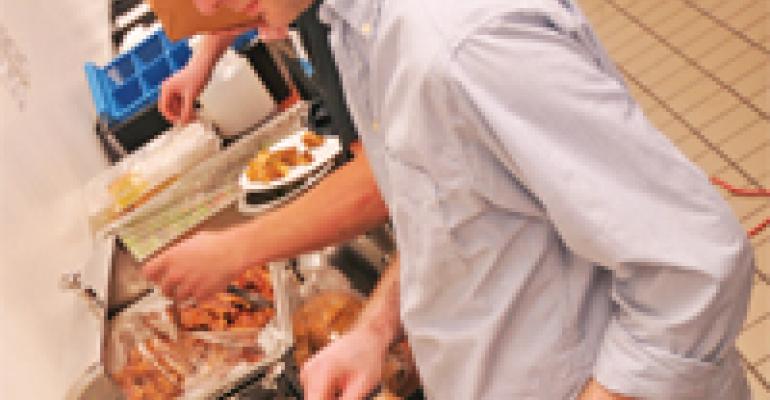Every restaurant veteran has a nightmare story about bad employee meals, free feeds that made prison food look like haute cuisine. After eating his share of them as a cook, Chris Clime committed to changing things as he ascended to chef.
“Oh, man, you don’t even want to know about some of those,” says Clime, executive chef at PassionFish in Reston, Va., recalling a particularly indigestible chicken confit taco seasoned with rosemary and cumin.
These days, Clime aims to create fresh, delicious employee meals out of ingredients that would otherwise have gone to waste, including fresh fish and meat trimmings, starches and vegetables.
“I give them things that aren’t sellable to the guest, like a 3-ounce portion of fish that’s too small,” he says. “As long as costs are in line, they might even get tenderloin.”
“Family” fuel When faced with time and food cost pressures, it can be easy to treat these so-called “family meals” as afterthoughts, but chefs say that’s a mistake. While some chefs view the freebie shrewdly as theft control, knowing that people working around food all day might otherwise be tempted to steal food, others simply view the meals as fuel for people with physically demanding jobs. “It’s a morale thing for us, [and] it’s a free benefit we want them to partake of,” says Michael Paley, executive chef at Proof on Main in Louisville, Ky. “From a chef’s perspective, you’re busy, and sometimes it’s the last thing you want to do for the staff, but they appreciate it.” Paley delegates the meal to a prep cook who prepares fresh buffet lunches and dinners for each shift. To simplify the process for the cook, meals are themed. “We do a ‘grill day,’ when we have hamburgers and hot dogs, or ‘breakfast at lunch,’ when he does bacon and eggs,” he says. “We’ll even do Easter and Thanksgiving meals.” More than a meal Wesley True, chef-partner at True Restaurant in Mobile, Ala., says free meals are particularly important for the lowest-paid employees. Many truly need the meal, which he suspects might be the best they get all day. “My dishwashers don’t make a lot of money,” True says. “So when I can, I try to send them home with something.” At Luke Restaurant in New Orleans, chef Steven McHugh delegates employee meals to student interns who make red beans and rice and scratch pizza. Dishwashers eat first, followed by chefs, cooks and servers. And to ensure they learn how to control portions and prepare correct amounts, interns eat last. Discount dining Aside from organized meals, some chefs also allow servers to order from the menu at a discount because it fits their staggered schedules and they learn more about the foods they’re selling. Servers “get to order anything they want at half-off, except sushi,” Clime says. With as many as 50 front-of-the-house employees working on any given shift, he views it best to let that team choose. “A lot don’t want an employee meal, and others have dietary concerns, so let them have what they want,” he says.




